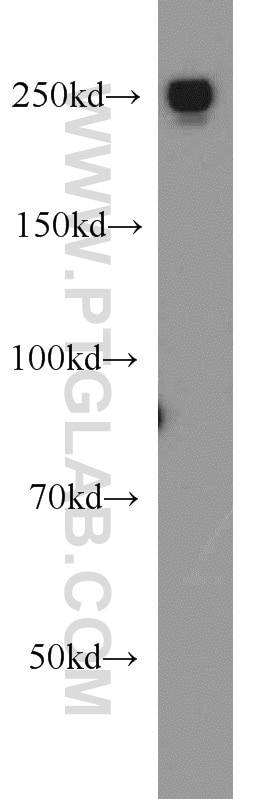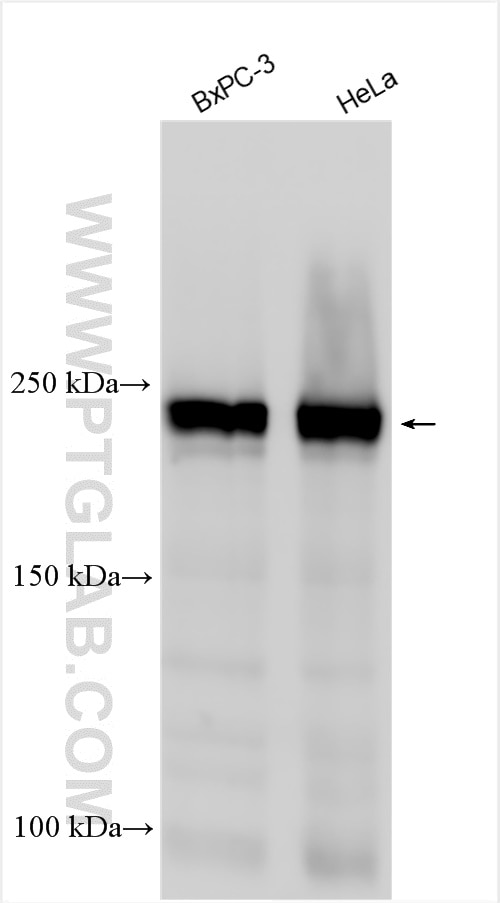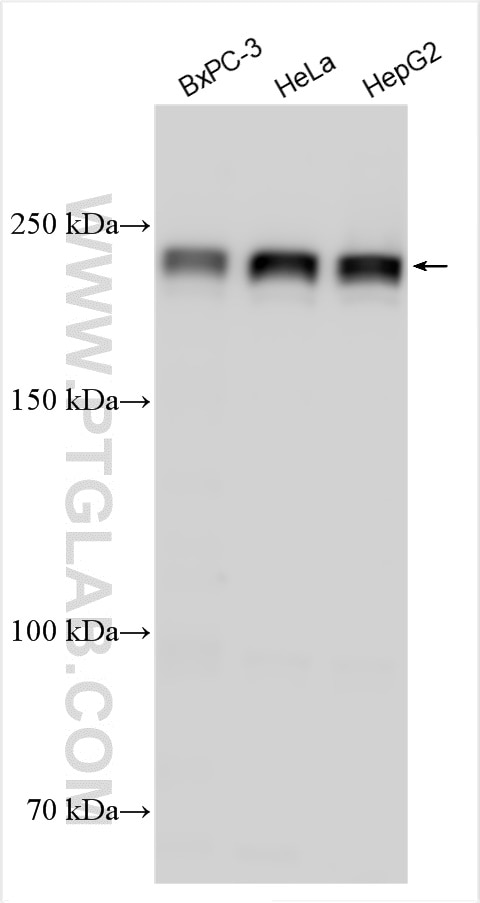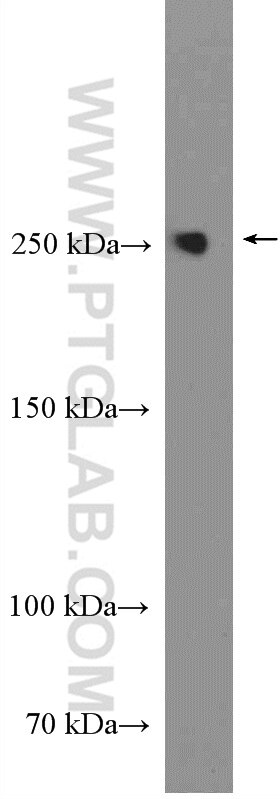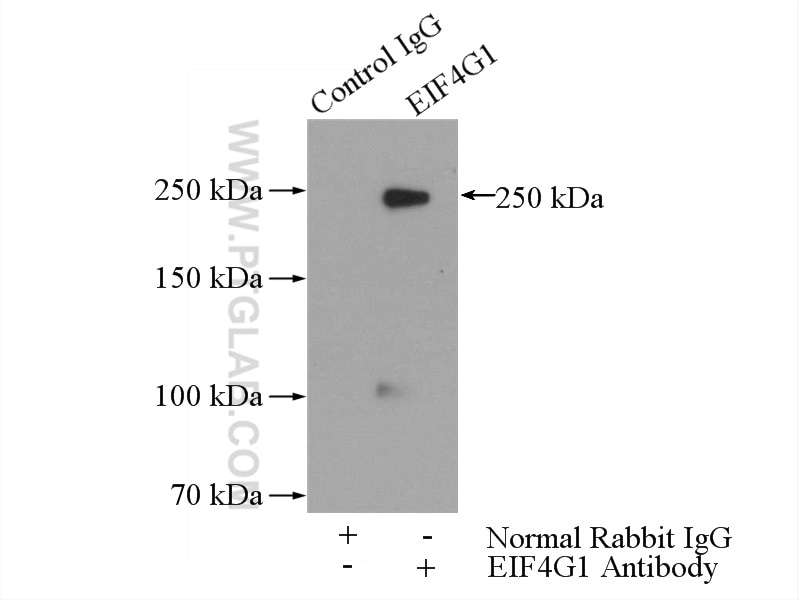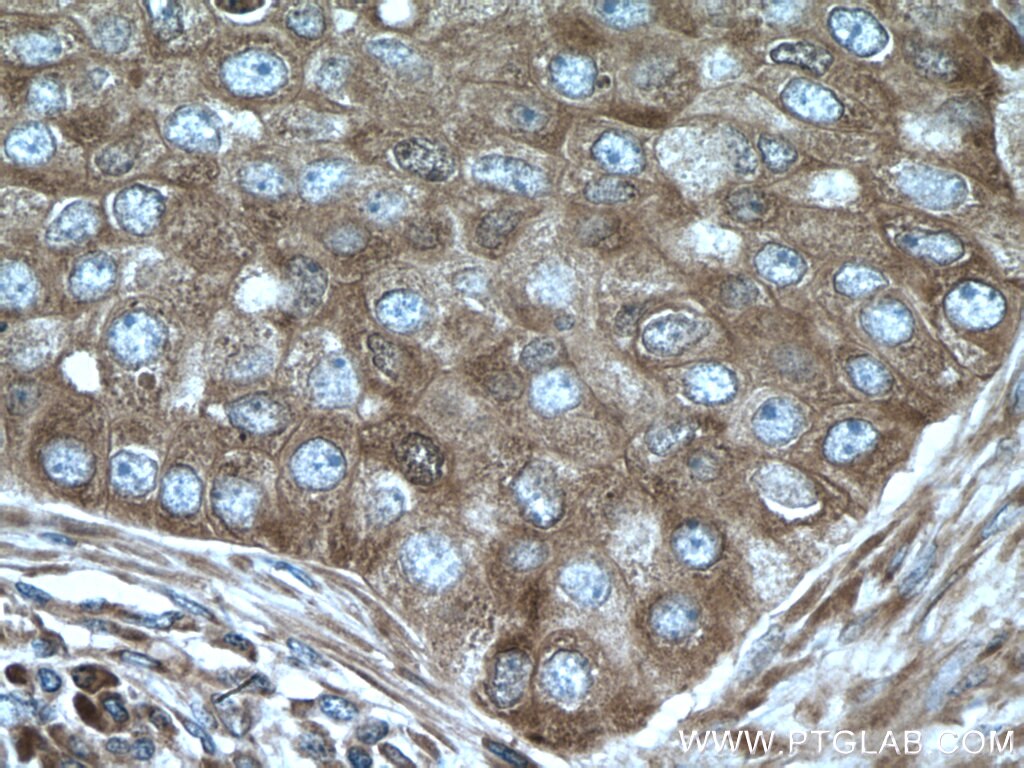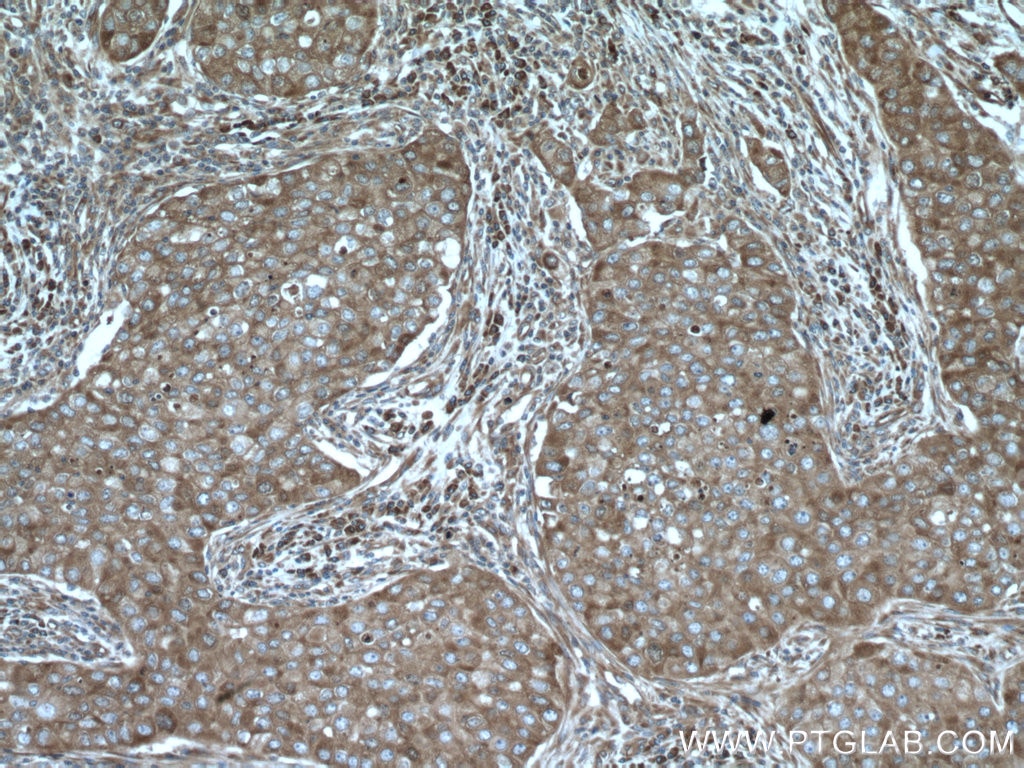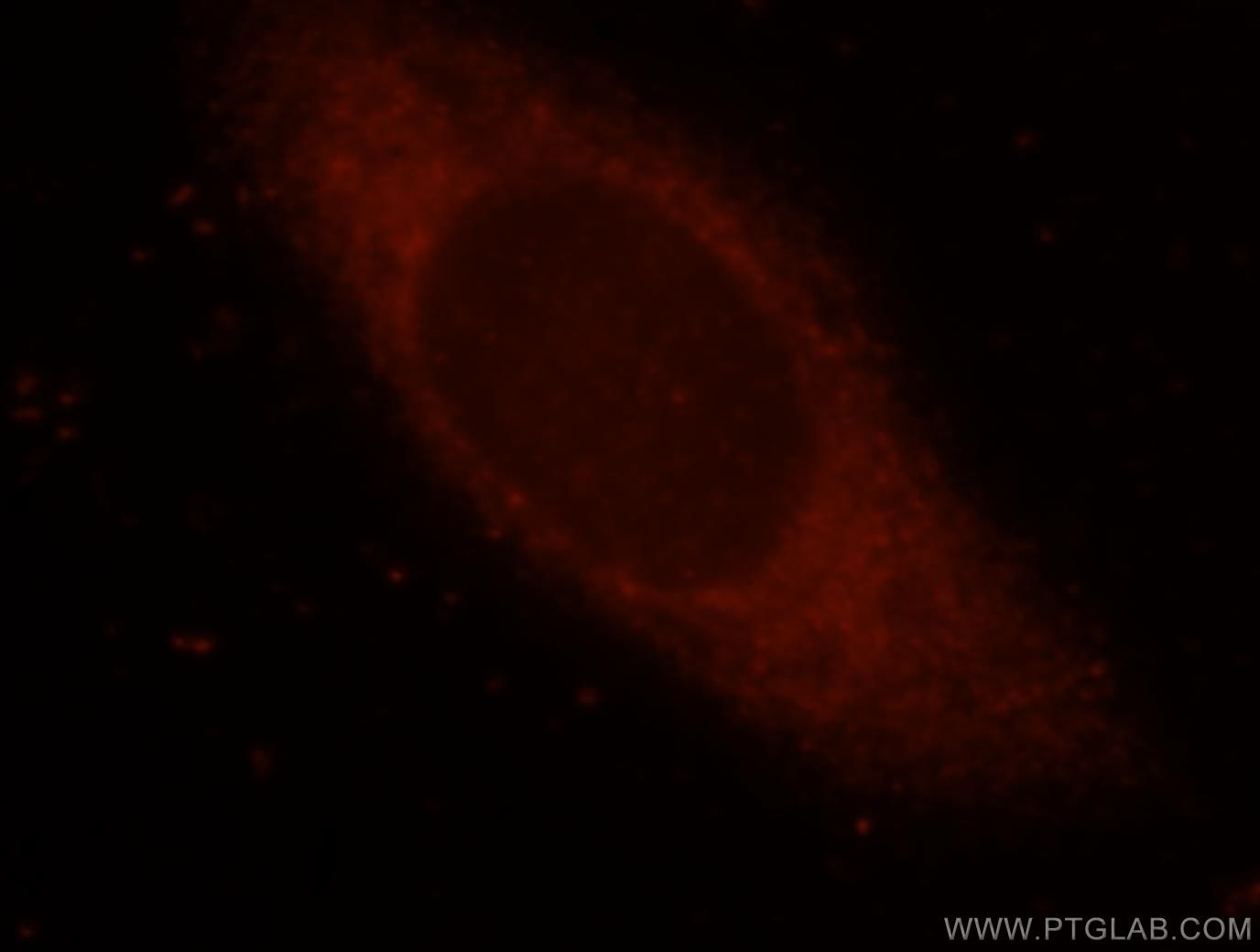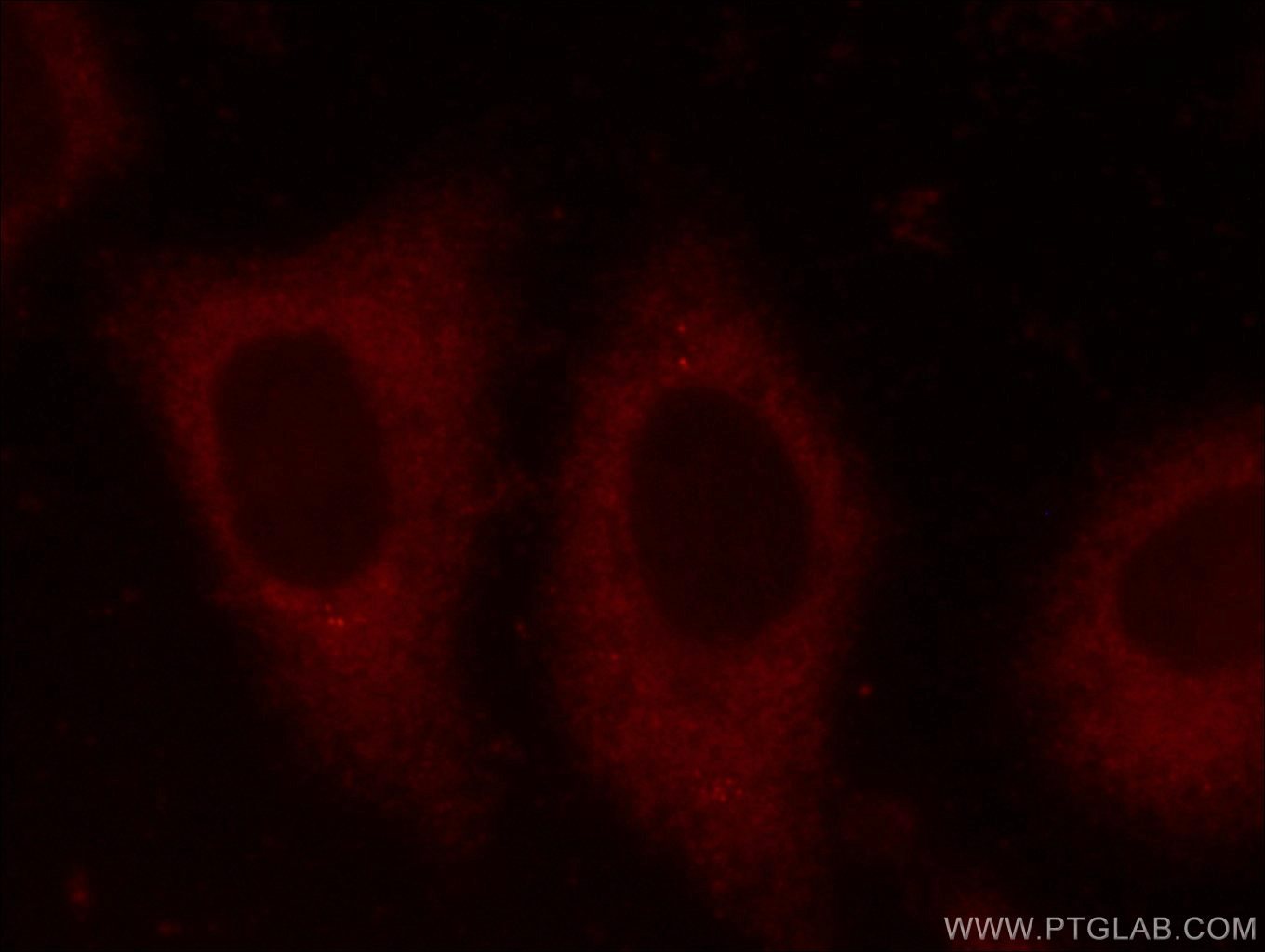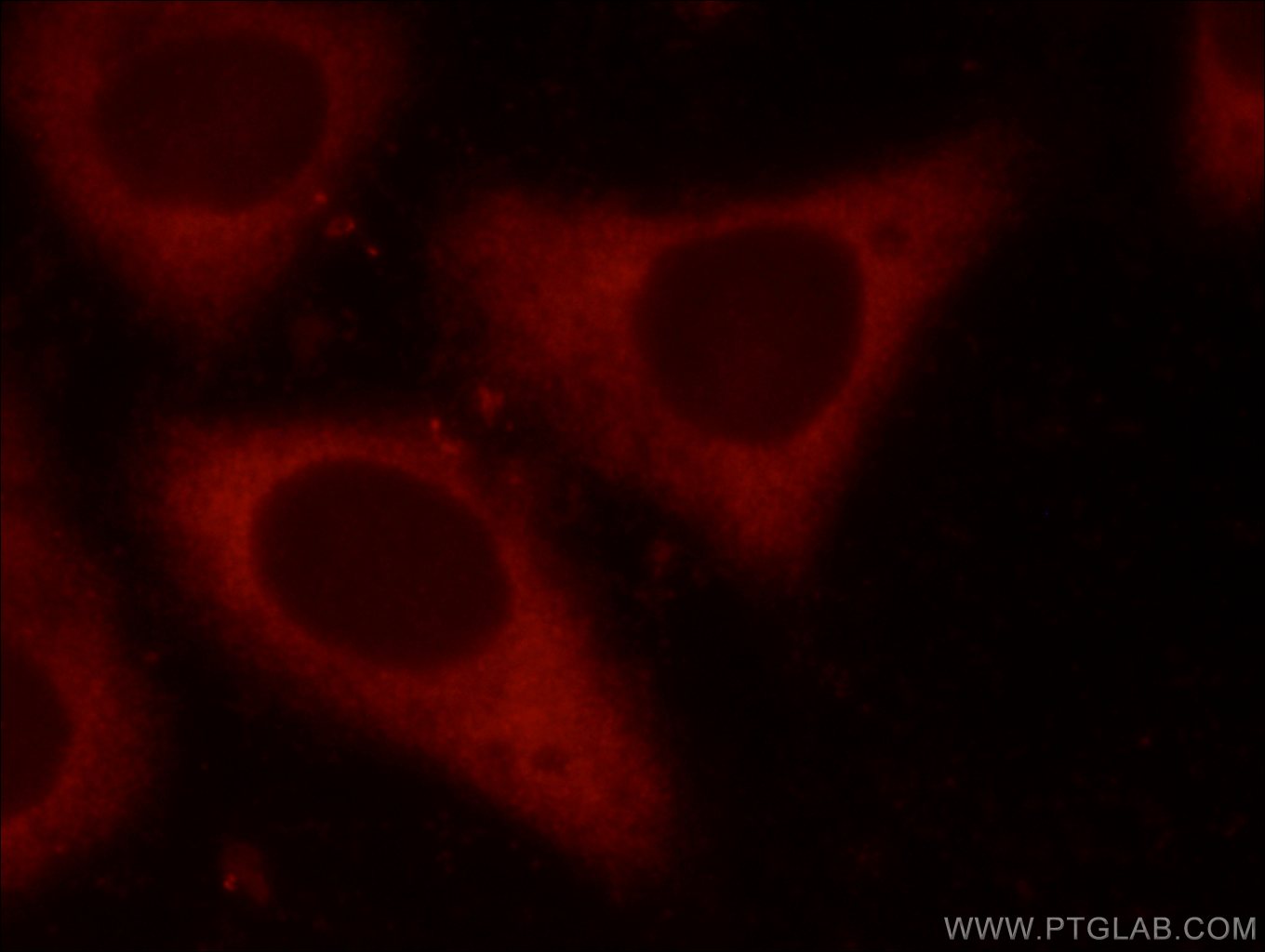- Phare
- Validé par KD/KO
Anticorps Polyclonal de lapin anti-EIF4G1
EIF4G1 Polyclonal Antibody for WB, IP, IF, IHC, ELISA
Hôte / Isotype
Lapin / IgG
Réactivité testée
Humain et plus (1)
Applications
WB, IHC, IF/ICC, IP, CoIP, ELISA
Conjugaison
Non conjugué
N° de cat : 15704-1-AP
Synonymes
Galerie de données de validation
Applications testées
| Résultats positifs en WB | cellules BxPC-3, cellules HeLa, cellules HepG2 |
| Résultats positifs en IP | cellules HeLa |
| Résultats positifs en IHC | tissu de cancer du sein humain, il est suggéré de démasquer l'antigène avec un tampon de TE buffer pH 9.0; (*) À défaut, 'le démasquage de l'antigène peut être 'effectué avec un tampon citrate pH 6,0. |
| Résultats positifs en IF/ICC | cellules HeLa, cellules HepG2, cellules HepG2 traitées à l'acide éthacrynique |
Dilution recommandée
| Application | Dilution |
|---|---|
| Western Blot (WB) | WB : 1:2000-1:16000 |
| Immunoprécipitation (IP) | IP : 0.5-4.0 ug for 1.0-3.0 mg of total protein lysate |
| Immunohistochimie (IHC) | IHC : 1:50-1:500 |
| Immunofluorescence (IF)/ICC | IF/ICC : 1:10-1:100 |
| It is recommended that this reagent should be titrated in each testing system to obtain optimal results. | |
| Sample-dependent, check data in validation data gallery | |
Applications publiées
| KD/KO | See 1 publications below |
| WB | See 15 publications below |
| IHC | See 4 publications below |
| IF | See 6 publications below |
| CoIP | See 1 publications below |
Informations sur le produit
15704-1-AP cible EIF4G1 dans les applications de WB, IHC, IF/ICC, IP, CoIP, ELISA et montre une réactivité avec des échantillons Humain
| Réactivité | Humain |
| Réactivité citée | Humain, souris |
| Hôte / Isotype | Lapin / IgG |
| Clonalité | Polyclonal |
| Type | Anticorps |
| Immunogène | EIF4G1 Protéine recombinante Ag8342 |
| Nom complet | eukaryotic translation initiation factor 4 gamma, 1 |
| Masse moléculaire calculée | 1600 aa, 176 kDa |
| Poids moléculaire observé | 250 kDa |
| Numéro d’acquisition GenBank | BC007788 |
| Symbole du gène | EIF4G1 |
| Identification du gène (NCBI) | 1981 |
| Conjugaison | Non conjugué |
| Forme | Liquide |
| Méthode de purification | Purification par affinité contre l'antigène |
| Tampon de stockage | PBS avec azoture de sodium à 0,02 % et glycérol à 50 % pH 7,3 |
| Conditions de stockage | Stocker à -20°C. Stable pendant un an après l'expédition. L'aliquotage n'est pas nécessaire pour le stockage à -20oC Les 20ul contiennent 0,1% de BSA. |
Informations générales
Eukaryotic cellular messenger RNAs are posttranscriptionally modified by addition of an m(7)GTP moiety to the 5-prime terminus, referred to as a cap. Recognition of the cap structure and unwinding of mRNA secondary structure during the initiation phase of protein synthesis is catalyzed by initiation factors of the eIF4 group. EIF4G1, a subunit of eIF4 gamma, forms various complexes with the other eIF4 polypeptides [PMID: 7601469]. Mutations in the EIF4G1 gene, encoding a component of the eIF4F translation initiation complex, were recently reported as a possible cause for the autosomal dominant form of Parkinson's disease [PMID:22658323]. The calcualted molecular weight of EIF4G1 is 175 kDa, but modified EIF4G1 is about 220-240 kDa. (PMID: 18426977 )
Protocole
| Product Specific Protocols | |
|---|---|
| WB protocol for EIF4G1 antibody 15704-1-AP | Download protocol |
| IHC protocol for EIF4G1 antibody 15704-1-AP | Download protocol |
| IF protocol for EIF4G1 antibody 15704-1-AP | Download protocol |
| IP protocol for EIF4G1 antibody 15704-1-AP | Download protocol |
| Standard Protocols | |
|---|---|
| Click here to view our Standard Protocols |
Publications
| Species | Application | Title |
|---|---|---|
Mol Cell The oncomicropeptide APPLE promotes hematopoietic malignancy by enhancing translation initiation. | ||
J Extracell Vesicles Extracellular vesicles rich in HAX1 promote angiogenesis by modulating ITGB6 translation. | ||
Proc Natl Acad Sci U S A Cellular cap-binding protein, eIF4E, promotes picornavirus genome restructuring and translation. | ||
PLoS Genet SAMHD1 Inhibits LINE-1 Retrotransposition by Promoting Stress Granule Formation. | ||
Diabetes Translational Factor eIF4G1 Regulates Glucose Homeostasis and Pancreatic β-Cell Function.
| ||
J Cell Sci ADAR1 limits stress granule formation through both translation-dependent and translation-independent mechanisms. |
